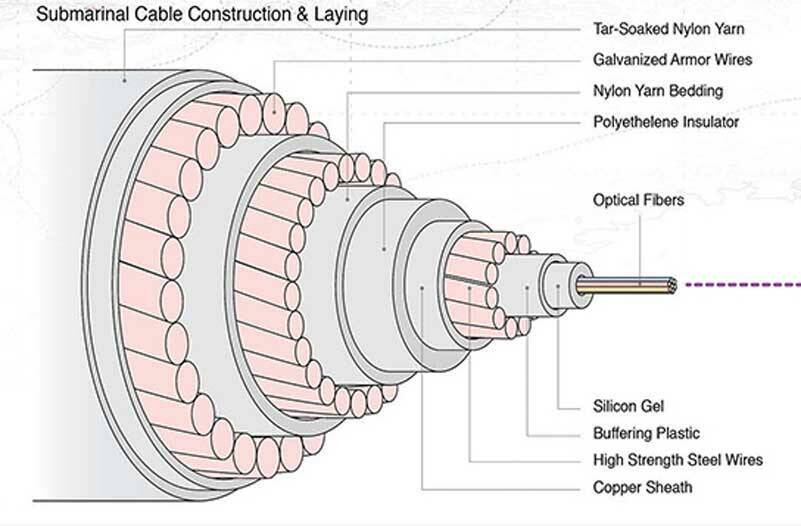By Morf Morford
Tacoma Daily Index
Tacoma used to bill itself as “the most wired city”.
That might have been true, but the larger reality is that, as much as we might consider our life and work (and play) to be “wireless”, the reality is that most of our data (by some measures, up to about 99%) goes through fiber optic cables – most of which stretch around the world, out of sight and, one hopes, out of reach of any unauthorized interference or interception.
We might think that our phone calls and Google searches go through satellites and cell phone towers.(Statistics released by U.S. Federal Communications Commission indicate that satellites account for just 0.37% of all U.S. international capacity).
And we might also have the impression that there is something new about cabled connectivity.
For a little perspective, the first transcontinental cable was laid in 1858 (a telegraph cable – it lasted about three weeks) and connected Ireland to Newfoundland, making telegraph communication possible between England and Canada – which essentially meant Europe and North America. By 1900, less than fifty years later, there were already over 130,000 miles of cable running along the ocean floor.
Today, there are over 420 submarine cables in service, stretching over 700,000 miles (1.3 million km) around the world.
As you might guess, the network is clustered around information economy hotspots like Singapore, London and New York, but cables connect pretty much anywhere to anywhere else.
Even what had been relatively isolated Pacific island nations are connected.
If you want to see the global reach of the cables, that, for better or worse, link us all together, take a look at this regularly updated map of transoceanic cables – https://www.submarinecablemap.com/.
The “cloud” is not up in the sky
When you hear the term “The cloud”, you might think of some ethereal space or some energy neutral space, or even a server-farm out in the desert somewhere, but the reality is that the whole world is hard-wired.
The “cloud” is not up in the sky, it is across every ocean and vast body of water that connects or separates us all.
Under the water is not entirely safe or stable of course. Construction projects might damage the cables by accident, anchors might be dropped from boats, sharks and other sea life might chew on or otherwise disrupt a thousand mile (or more) cable, and of course, earthquakes.
Human spies and saboteurs would love the idea of an unguarded exposed communications line.
There is an average of about 100 transoceanic cables breakages each year.
You might think laying cable literally around the world is expensive, and it is. But it promises to be one of the best investments ever.
Microsoft, Google, Facebook, and Amazon (and many others, including national governments) have dedicated more than $8 billion in new investment over the next three years.
In the last few years of the 20th century, communications satellites lost most of their North Atlantic telephone traffic to low-cost, high-capacity, low-latency cables.
What happens to old cables?
Cables are designed with a minimum design life of about 25 years, but, especially out in the open ocean, there is nothing firm about this time span.
Cables may remain operational longer than 25 years, but they’re often retired earlier because they’re economically obsolete.
They just can’t provide as much capacity as newer cables at a comparable cost, and are thus too expensive to keep in service.
As you might guess, when a cable is retired it is often just disconnected and abandoned and could remain inactive on the ocean floor.
There are more and more companies that are gaining the rights to abandoned cables, pulling them up, and salvaging them for raw materials.
Where are these cables?
These cables are just about everywhere – and soon to be in even more places.
In short, they can be anywhere they won’t be threatened by boat anchors, trawling by fishing vessels or natural disasters – which means that the cable itself must be built to flex and be strong – and be suited to being buried half-way around the world.
A Toronto-based company has proposed running a cable through the Arctic that will connect Tokyo directly with London.
This was previously considered impossible, but climate change and melting ice caps have moved this proposal firmly into the doable-but-crazy-expensive category.
Like every backbone or skeleton, we need that trans-oceanic cable system and we are glad it’s there, but we are also happy to never see it.
As long as it keeps us connected, we are not going to complain. Or even notice.






